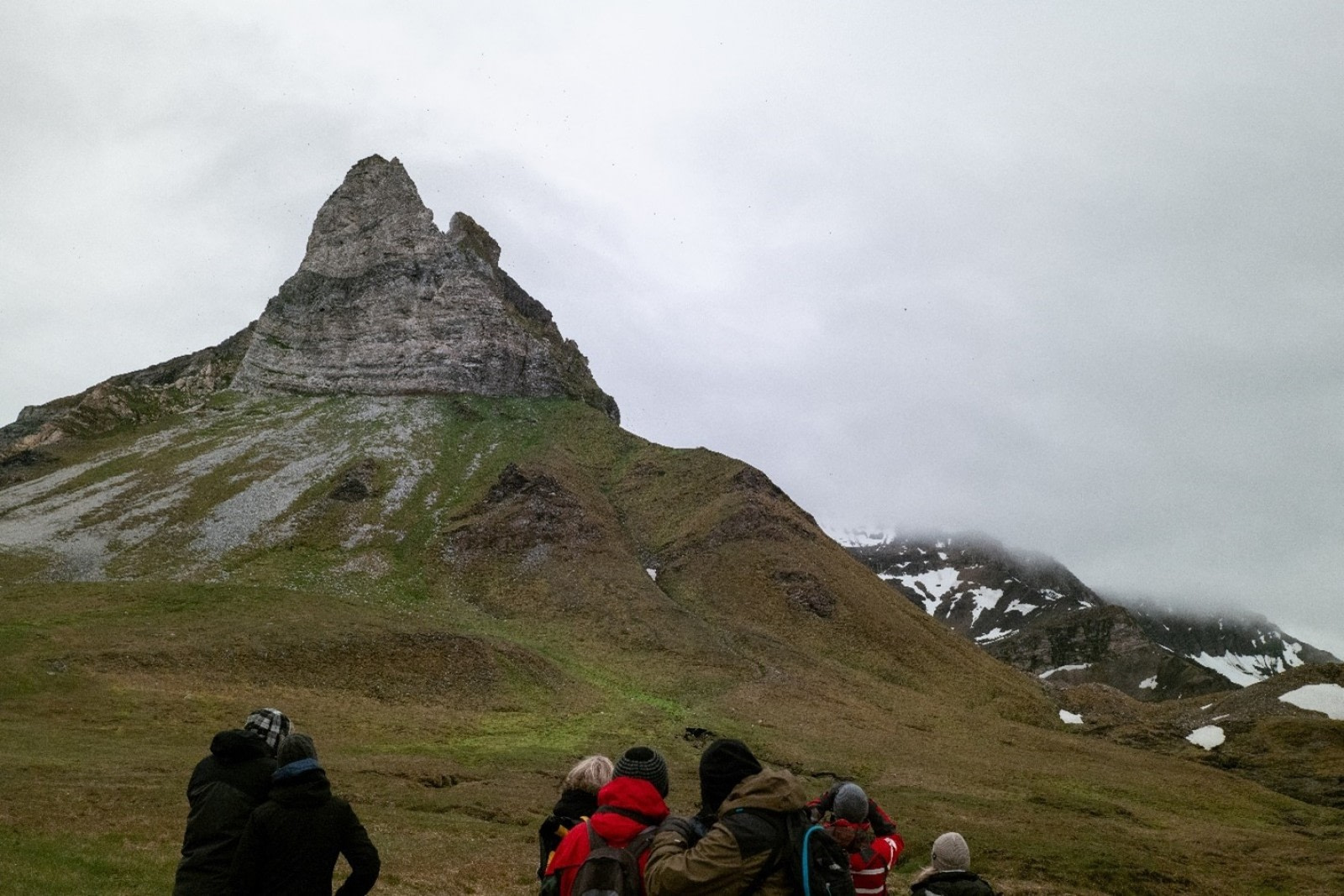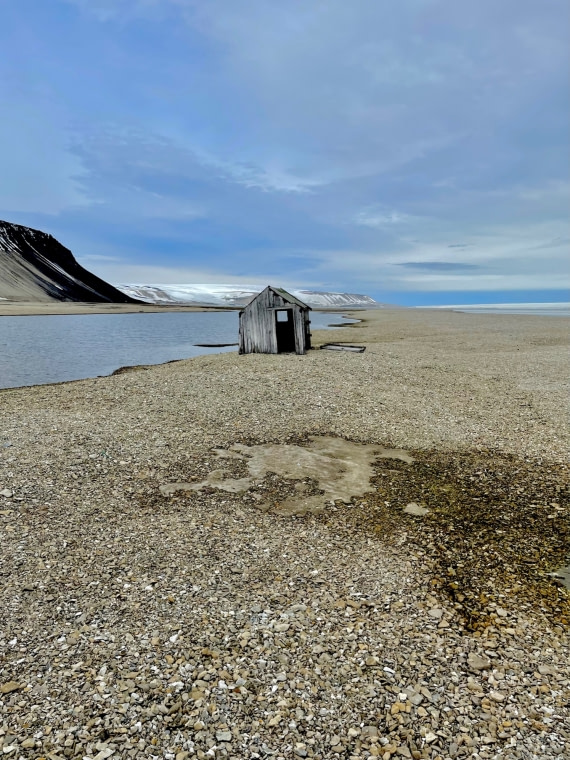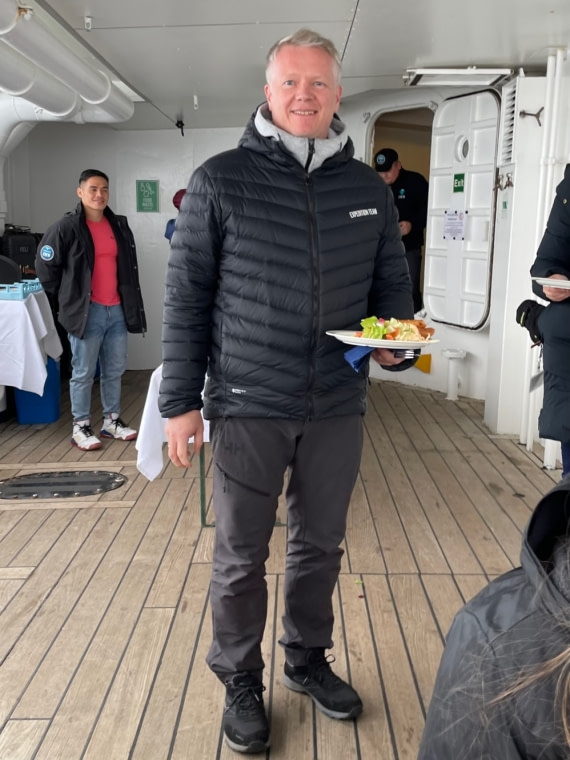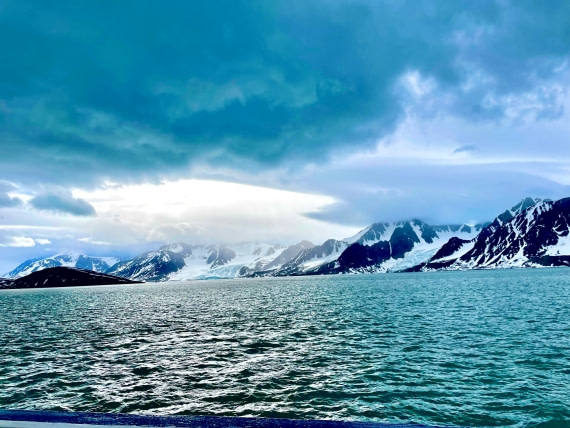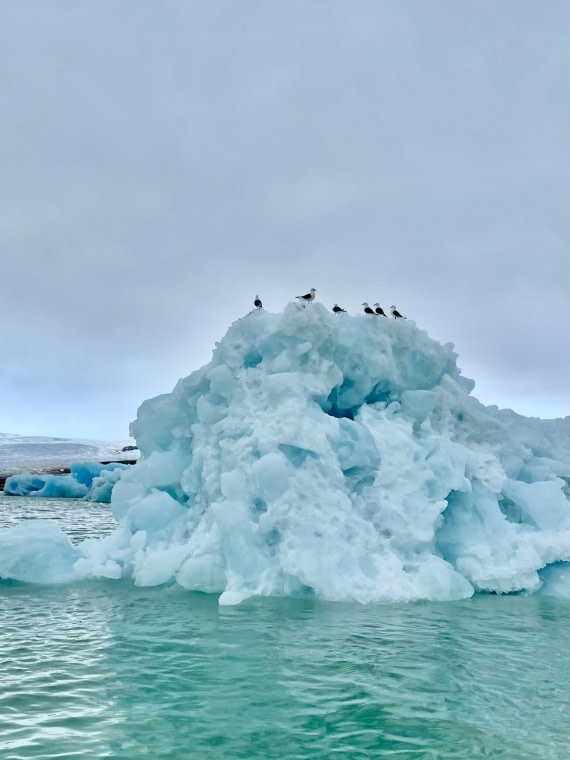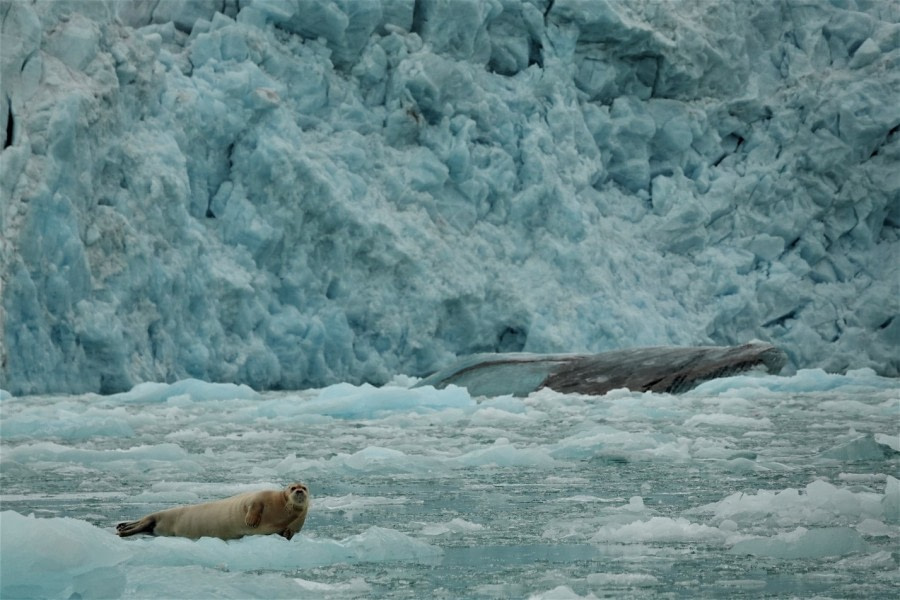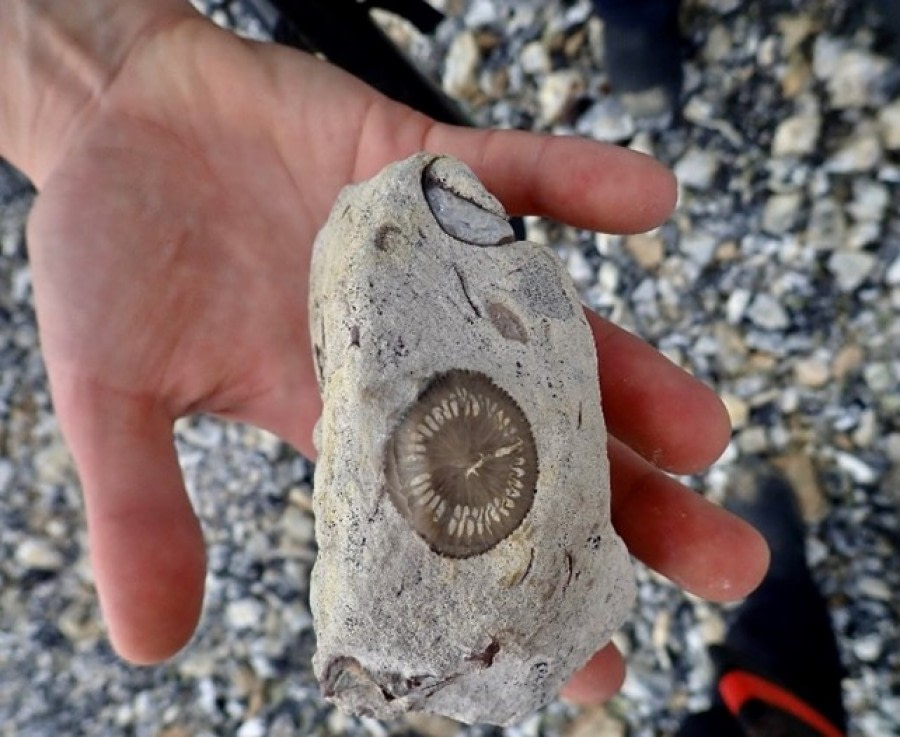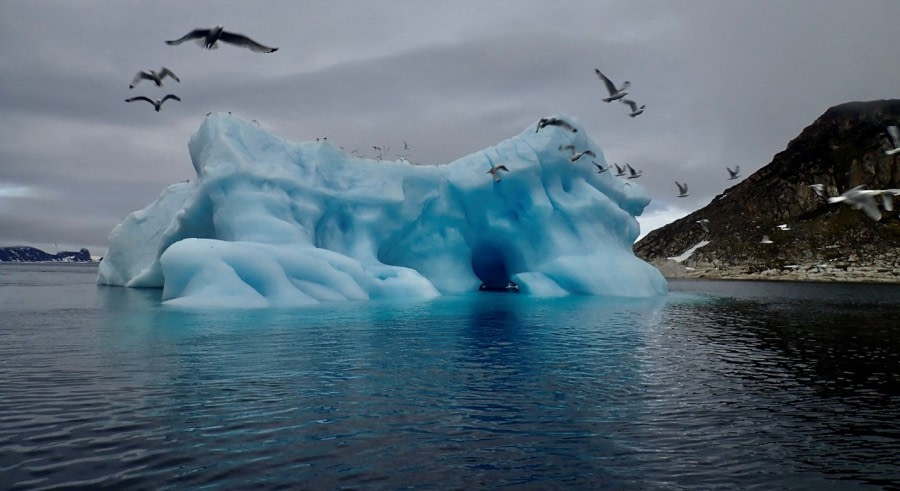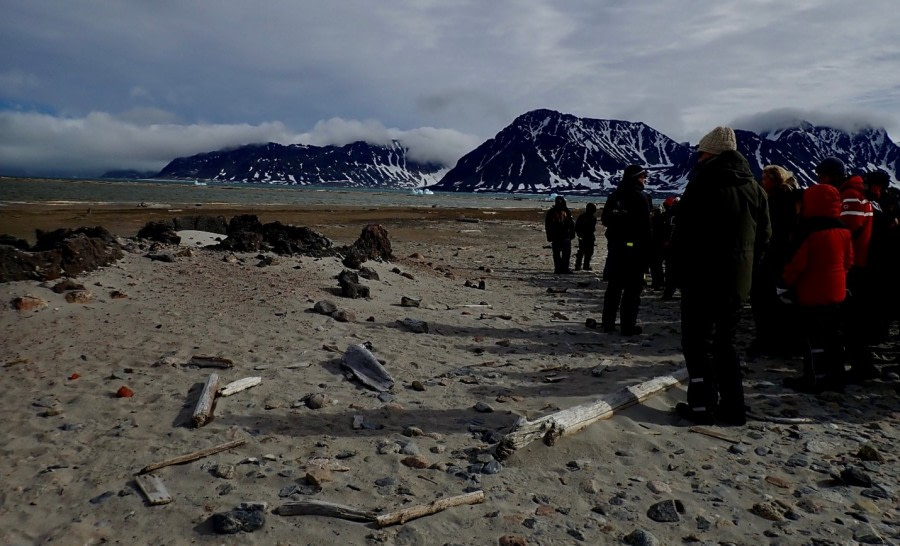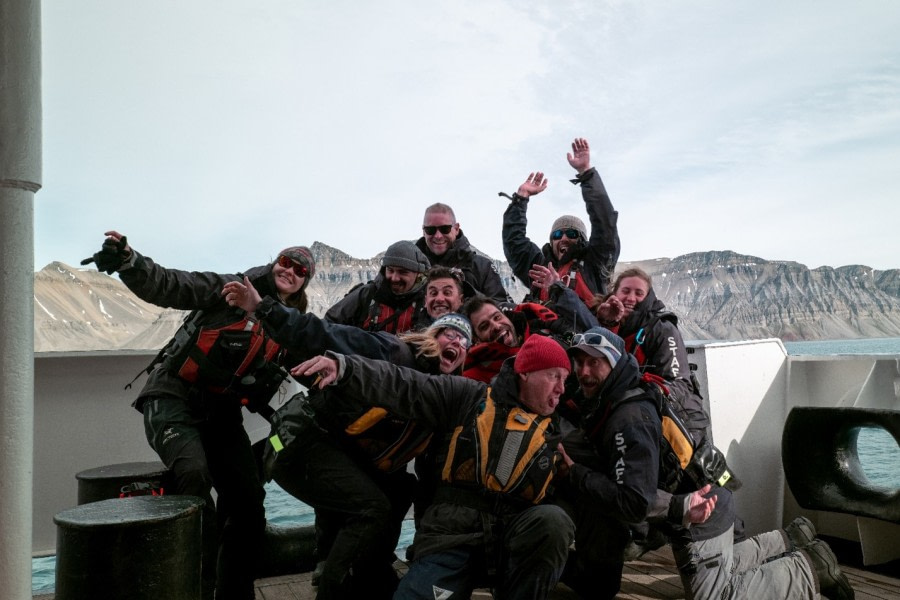| Datum: |
02.07.2022 |
| Position: |
79°34.2’N / 020°40.8’E |
| Wind: |
S 2 |
| Wetter: |
Partly Cloudy |
| Lufttemperatur: |
+7 |
Good morning, good morning! And what a beautiful morning it was! Just before breakfast we spotted a seal next to the ship, a good start of the day. We then did a landing and kayaking at Palanderbukta, where we had the option for a longer, fast-paced walk, or a shorter walk along the ridge behind the beach. Both hikes took us
across a few ancient beaches, also known as ‘raised beaches’, which were formed by uplift of the land following the retreat of the glaciers in the last millennia. This allowed us to find shells above the current seashore, that were thousands of years old! We also found evidence of freezing and thawing of the groundwater in the form of spectacular stone rings! Because finer sediment contains more groundwater than in between the bigger rocks, the expanding and contracting of the water during the freezing and thawing creates a lateral movement of the bigger rocks. Eventually the bigger rocks will form beautiful circles, with the finer sediment in the middle. Some flowers managed to manifest themselves on this rocky environment, where only the hardiest plants can grow. We saw stunning Svalbard Poppy’s, Purple Saxifrage, Whitlow-grass and Tufted Saxifrage.
The kayakers did a small walk on the beach up to the first ridge before or after swapping with the team in the water. The water was very calm and acted like a mirror, which gave the kayakers a beautiful, surreal experience.
After all that walking and exploring, we were definitely ready for lunch, which was delicious as usual. On the way over to our next location, the sky was orange, the water was calm and mirror-like and icebergs were floating all around us… It was stunning!
The afternoon was like a scene from the movie ‘Birds’ by Hitchcock. We did a zodiac cruise along the steep cliffs of Alkefjellet, or Guillemot Mountain, where the guillemots nest and swarm in the air. The cliffs were formed by a horizontal intrusion of dolerite into a layer of limestone, giving the cliffs a black colour with light layers underneath and above it. These cliffs have tiny little ledges, which are perfect for the ca. 60.000 breeding pairs of Guillemots to nest on, as they are difficult to reach by predators such as the Arctic Fox. Speaking of the Arctic Fox, we saw three of them right underneath the cliffs! One even gave us a nice show on the snow! What an amazing and special appearance to finish of an incredible day!
